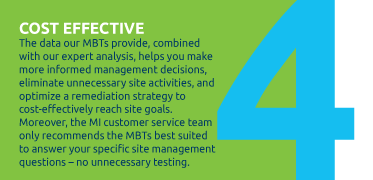Produced Water
For more information call a service expert at +1 865-573-8188 or email us at [email protected].
Challenge
Water is an important input in many mining operations, yet the Produced Water output can create significant risks to operations and local communities, providing a potential liability for operators.
Risks include:
- Corrosion: Contaminants within the produced water can lead to corrosion if the water is reused.
- Groundwater Contamination: Produced Water can contaminate groundwater used for drinking, irrigation or industrial purposes, affecting both human health and the environment.
- Soil Contamination: Produced Water can contaminate soil, making it unsuitable for agriculture or other land uses, potentially lowering the value of post-mining operations.
- Indirect Effects: Improperly managed Produced Water can lead to regulatory, public relations and legal liability issues.
Potential Support
Bioremediation can be a useful tool for treating Produced Water. Certain microorganisms can degrade a variety of contaminants found in produced water. For example, sulfate-reducing bacteria can help prevent acid mine drainage, some bacteria can remove heavy metals from water, and other microbes can degrade organic contaminants. MI has several tools to help you understand the unique nature of your site and the Produced Water within it, allowing you to identify the most efficient strategy and then monitor its success.
Next Generation Sequencing (NGS)
MI's Next Generation Sequencing (NGS) aids in the characterization and identification of microbial communities within your site and the Produced Water it generates.
CENSUS© qPCR
CENSUS© qPCR offers targets for quantifying organisms needed to help monitor your chosen strategy and ensure it is working as intended.
QuantArray© - BGC
QuantArray© - BGC offers a suite of targets to analyze biogeochemical processes including metal, nitrate, and sulfur cycling. These cycles are often important for processing produced mine water.
Precise assays are essential for measuring the abundance of microorganisms, allowing for a better understanding of the likelihood of the desired mineral. MI's long history and expertise in Assay Development make it a trusted partner in developing tools specific to your needs.
What can MI do for you?
With more than three decades of experience utilizing these tools to make actionable decisions, Microbial Insights team of experts are available for project specific guidance on any of these processes.
Outcome
By integrating these molecular tools, the mining industry and government can achieve more sustainable practices, reduce environmental impacts and enhance resource recovery.






